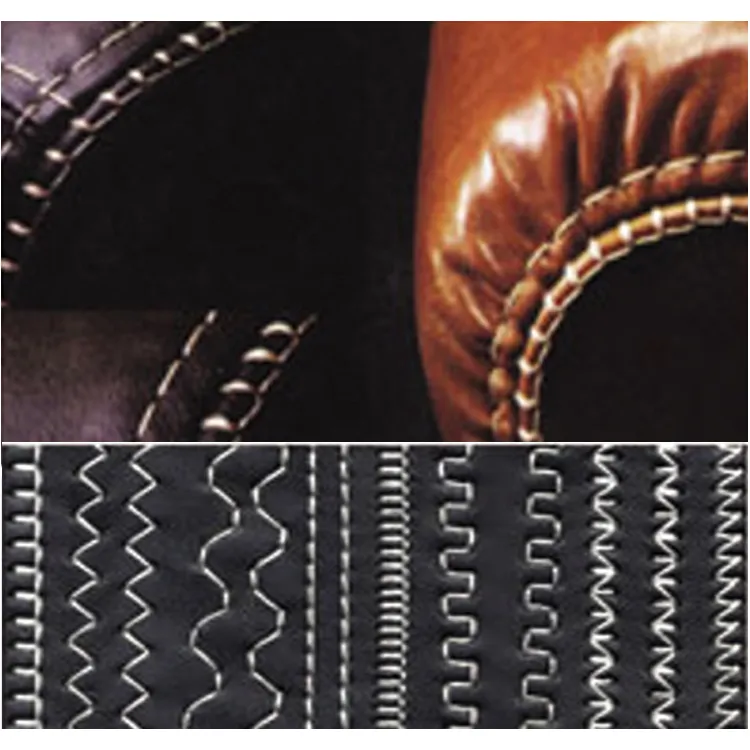FIBC Bag Handle and Belt Sewing Machine for Efficient Production
The Importance of FIBC Bag Handle Belt Sewing Machines in the Packaging Industry
In the modern manufacturing and packaging industry, the efficiency and durability of products play a crucial role in maintaining competitiveness. One of the unsung heroes in this sector is the FIBC (Flexible Intermediate Bulk Container) bag handle belt sewing machine. This specialized equipment is designed to produce the handles of FIBC bags, which are essential for the safe and efficient transportation of bulk materials. In this article, we will explore the significance of these machines, their operational features, and their impact on the industry.
What are FIBC Bags?
FIBC bags, also known as bulk bags or ton bags, are large sacks made from flexible fabric that can carry a wide variety of materials, including grains, chemicals, and powders. The handles of these bags are critical, as they allow for easy lifting and maneuvering, ensuring safe handling and transport. The durability of these handles is paramount; they must withstand heavy loads and comply with safety standards.
The Role of FIBC Bag Handle Belt Sewing Machines
FIBC bag handle belt sewing machines are specifically engineered to construct the handles that are typically sewn onto FIBC bags. These machines use heavy-duty threads and advanced sewing techniques to ensure the handles are securely attached and capable of carrying the weight of the bag's contents.
One of the primary functions of these machines is to stitch together the handle belts in a manner that distributes the load evenly. This is crucial because uneven stitching can lead to failure during handling, resulting in potential product loss and safety hazards. By utilizing an FIBC bag handle belt sewing machine, manufacturers can achieve consistent quality and meet stringent safety regulations.
Advanced Features of Sewing Machines
Many modern FIBC bag handle belt sewing machines are equipped with advanced features that enhance productivity and precision. Some key features include
fibc bag handle belt sewing machine

1. High-speed Sewing These machines are designed to operate at high speeds, significantly increasing production rates. With the ability to sew multiple handles quickly, manufacturers can keep up with demand without sacrificing quality.
2. Automatic Tension Control Proper thread tension is critical for creating strong seams. Advanced machines come with automatic tension control systems that adjust the tension based on the fabric thickness and type. This feature minimizes the risk of thread breakage and ensures uniform stitching.
3. User-friendly Interfaces Many modern machines are equipped with intuitive touchscreens that allow operators to easily set parameters, monitor production, and troubleshoot issues quickly, thereby reducing downtime.
4. Durability and Reliability The materials and construction of these machines are designed to handle rigorous use in industrial environments. They are built to withstand heavy workloads, ensuring longevity and reliability.
The Impact on the Industry
The introduction of FIBC bag handle belt sewing machines has revolutionized the packaging industry. With enhanced efficiency and consistency, manufacturers can produce high-quality bags at a lower cost. This has led to lower prices for consumers and increased availability of bulk packaging solutions across various sectors.
Moreover, the reliability of the sewn handles contributes to safety in logistics and transportation. By minimizing the risk of bag failure during handling, companies can reduce accidents, product loss, and associated costs.
Conclusion
In conclusion, FIBC bag handle belt sewing machines are a vital component of the packaging industry. Their ability to produce durable, reliable handles plays a crucial role in the safe transport of bulk materials. As manufacturing technologies continue to advance, these machines will likely become even more efficient, further solidifying their place in the market. For businesses looking to optimize their operations and ensure the safety of their products, investing in high-quality FIBC bag handle belt sewing machines is essential. The future of packaging is here, and it is built on the foundation of quality, efficiency, and safety.
-
Zigzag Sewing MachineNewsMay.12,2025
-
Single Needle Sewing MachineNewsMay.12,2025
-
Overlock Sewing Machine PriceNewsMay.12,2025
-
Heavy Duty Industrial Sewing MachineNewsMay.12,2025
-
FIBC Sewing MachineNewsMay.12,2025
-
Cylinder Bed Sewing MachineNewsMay.12,2025
-
Revolutionizing Sewing with CNC TechnologyNewsMar.28,2025





























